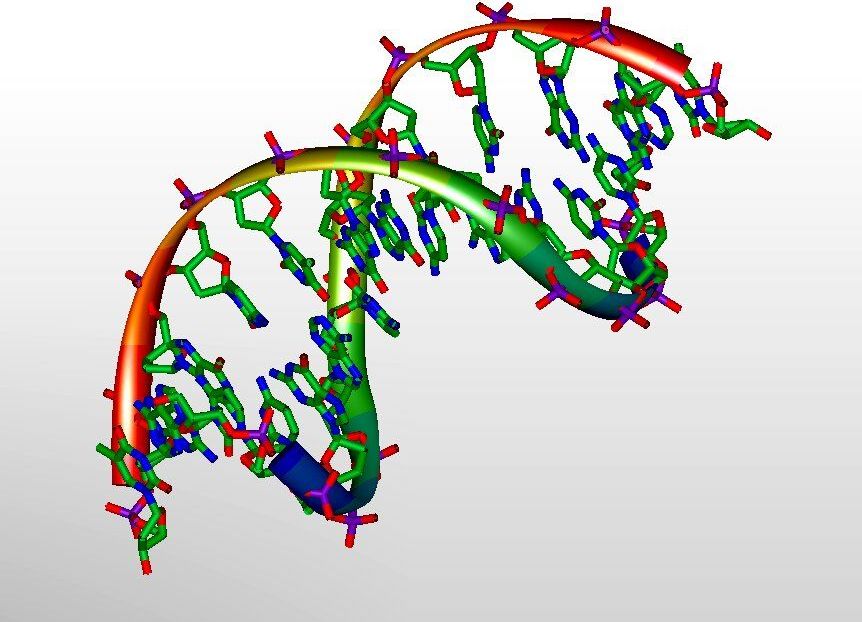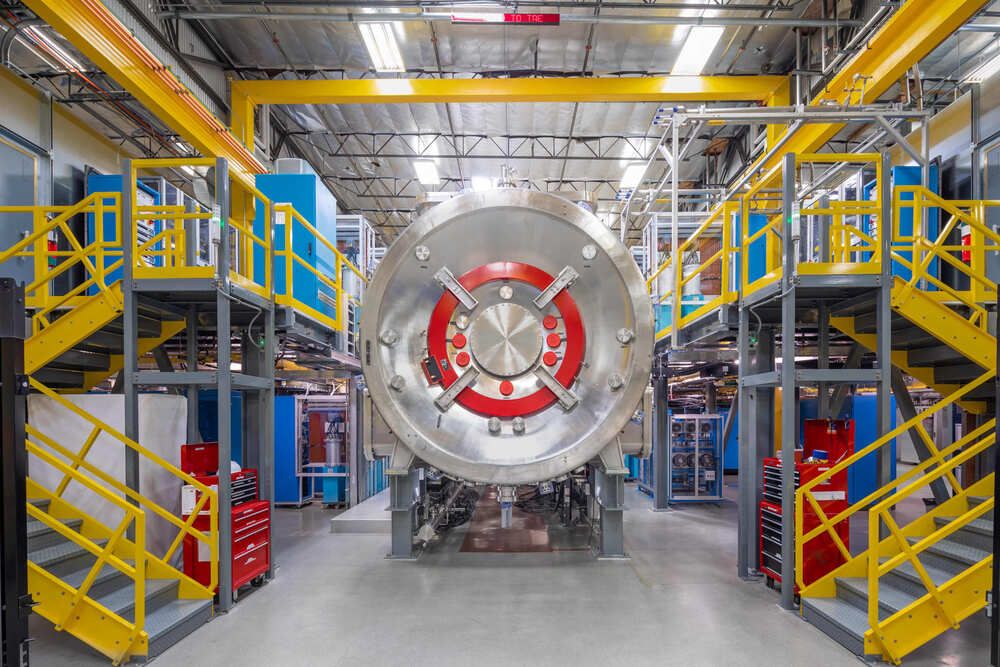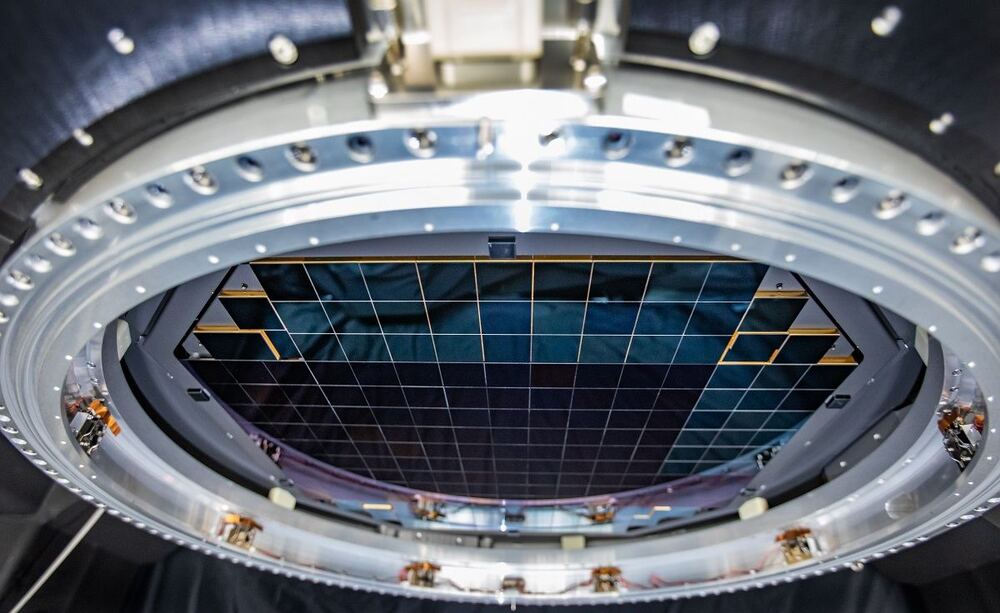Independent Genesis on Mars or Transfer of Life between Earth and Mars?
Considering the likelihood of an exchange of microbes between Earth and Mars.


After a mechanic from the United Kingdom lost his penis, medical innovators fashioned him a replacement out of his existing tissue — and it now rests on his left forearm.
45-year-old Malcolm MacDonald suffered from a perineum infection which led to a severe case of sepsis in 2014, which spread to his extremities, turning his fingers and toes black. Then it began to also affect his genitalia. “When I saw my penis go black I was beside myself,” MacDonald told The Sun. “It was like a horror film…I knew deep down it was gone and I was going to lose it. Then one day it just dropped off on to the floor.”
For two years afterwards, MacDonald says his life “fell apart”, until he was referred to Professor David Ralph, a urologist at University College London Hospital who specializes in penile reconstruction surgery.

While the CRISPR-Cas9 gene editing system has become the poster child for innovation in synthetic biology, it has some major limitations. CRISPR-Cas9 can be programmed to find and cut specific pieces of DNA, but editing the DNA to create desired mutations requires tricking the cell into using a new piece of DNA to repair the break. This bait-and-switch can be complicated to orchestrate, and can even be toxic to cells because Cas9 often cuts unintended, off-target sites as well.
Alternative gene editing techniques called recombineering instead perform this bait-and-switch by introducing an alternate piece of DNA while a cell is replicating its genome, efficiently creating genetic mutations without breaking DNA. These methods are simple enough that they can be used in many cells at once to create complex pools of mutations for researchers to study. Figuring out what the effects of those mutations are, however, requires that each mutant be isolated, sequenced, and characterized: a time-consuming and impractical task.
Researchers at the Wyss Institute for Biologically Inspired Engineering at Harvard University and Harvard Medical School (HMS) have created a new gene editing tool called Retron Library Recombineering (RLR) that makes this task easier. RLR generates up to millions of mutations simultaneously, and “barcodes” mutant cells so that the entire pool can be screened at once, enabling massive amounts of data to be easily generated and analyzed. The achievement, which has been accomplished in bacterial cells, is described in a recent paper in PNAS.

Artificial womb technology for extremely preterm infants — jasmijn kok, juno perinatal healthcare.
Every year, 800000 babies are born extremely preterm (defined as less than 28 weeks of age) worldwide. These infants are usually transferred to an air-based neonatal intensive care unit to support their heart and lung development. Exposure to air, however, leads to many complications, because the lungs are not fully developed yet.
An artificial uterus, or artificial womb, is a device that would allow for extra-corporeal pregnancy, by supporting the growth of a fetus outside the body of an organism that would normally carry the fetus to term.
Juno Perinatal Healthcare (https://www.junoperinatalhealthcare.com/) is a fascinating Dutch neonatal healthcare start-up which has a mission of developing a novel, alternative environment, similar to the mother’s womb, where extremely premature babies could be transferred, where the lungs remain filled with fluid and the umbilical cord will be attached to an artificial placenta to improve their organ development and ease the transition to newborn life.
Juno Perinatal Healthcare is a companion project to a interdisciplinary consortium known as the Perinatal Life Support (PLS) Project (https://perinatallifesupport.eu/), a consortium of three European universities, Aachen, Milan and Eindhoven, to establish the first ex-vivo fetal maturation system for clinical use.

Mitochondria are the energy suppliers of our body cells. These tiny cell components have their own genetic material, which triggers an inflammatory response when released into the interior of the cell. The reasons for the release are not yet known, but some cardiac and neurodegenerative diseases as well as the aging process are linked to the mitochondrial genome. Researchers at the Max Planck Institute for Biology of Aging and the CECAD Cluster of Excellence in Aging research have investigated the reasons for the release of mitochondrial genetic material and found a direct link to cellular metabolism: when the cell’s DNA building blocks are in short supply, mitochondria release their genetic material and trigger inflammation. The researchers hope to find new therapeutic approaches by influencing this metabolic pathway.
Our body needs energy—for every metabolic process, every movement and for breathing. This energy is produced in tiny components of our body cells, the so-called mitochondria. Unlike other cell components, mitochondria have their own genetic material, mitochondrial DNA. However, in certain situations, mitochondria release their DNA into the interior of the cell, causing a reaction from the cell’s own immune system and being associated with various diseases as well as the aging process. The reasons for the release of mitochondrial DNA are not yet known.

Made from piled-up blocks of sandstone, some of which weighed more than 500 kilograms, mustatils ranged from 20 metres to more than 600 metres in length, but their walls stood only 1.2 metres high. “It’s not designed to keep anything in, but to demarcate the space that is clearly an area that needs to be isolated,” says Thomas.
In a typical mustatil, long walls surround a central courtyard, with a distinctive rubble platform, or “head”, at one end and entryways at the opposite end. Some entrances were blocked by stones, suggesting they could have been decommissioned after use.
Excavations at one mustatil showed that the centre of the head contained a chamber within which there were fragments of cattle horns and skulls. The cattle fragments may have been presented as offerings, suggesting mustatils may have been used for rituals.

The head scientist of the US Space Force has an unusual idea for how to maintain military dominance: augmenting and upgrading human soldiers.
Speaking at an Air Force Research Laboratory event, Space Force chief scientist Joel Mozer suggested that we’re entering an era during which soldiers can become a “superhuman workforce,” according to Metro, thanks to new tech including augmented and virtual reality, sophisticated AI, and nerve stimulation.
“In the last century, Western civilization transformed from an industrial-based society to an information-based society,” Mozer said, “but today we’re on the brink of a new age: the age of human augmentation.”

Starburst galaxies, active galactic nuclei and tidal disruption events (from left) have emerged as top candidates for the dominant source of ultrahigh-energy cosmic rays.
In the 1930s, the French physicist Pierre Auger placed Geiger counters along a ridge in the Alps and observed that they would sometimes spontaneously click at the same time, even when they were up to 300 meters apart. He knew that the coincident clicks came from cosmic rays, charged particles from space that bang into air molecules in the sky, triggering particle showers that rain down to the ground. But Auger realized that for cosmic rays to trigger the kind of enormous showers he was seeing, they must carry fantastical amounts of energy — so much that, he wrote in 1939, “it is actually impossible to imagine a single process able to give to a particle such an energy.”
Upon constructing larger arrays of Geiger counters and other kinds of detectors, physicists learned that cosmic rays reach energies at least 100000 times higher than Auger supposed.
A cosmic ray is just an atomic nucleus — a proton or a cluster of protons and neutrons. Yet the rare ones known as “ultrahigh-energy” cosmic rays have as much energy as professionally served tennis balls. They’re millions of times more energetic than the protons that hurtle around the circular tunnel of the Large Hadron Collider in Europe at 99.9999991% of the speed of light. In fact, the most energetic cosmic ray ever detected, nicknamed the “Oh-My-God particle,” struck the sky in 1991 going something like 99.99999999999999999999951% of the speed of light, giving it roughly the energy of a bowling ball dropped from shoulder height onto a toe. “You would have to build a collider as large as the orbit of the planet Mercury to accelerate protons to the energies we see,” said Ralph Engel, an astrophysicist at the Karlsruhe Institute of Technology in Germany and the co-leader of the world’s largest cosmic-ray observatory, the Pierre Auger Observatory in Argentina.

The powerful image sensors at the heart of the Vera C. Rubin Observatory have just undergone successful testing. First light scheduled for 2022.
The Vera C. Rubin Observatory has taken another step towards first light, projected for some time in 2022. Its enormous 3200 megapixel camera just took its first picture during lab testing at the SLAC National Accelerator Laboratory. The camera is the largest ever built, and its unprecedented power is the driving force behind the Observatory’s ten year Legacy Survey of Space and Time (LSST).
When paired with the 8.4 meter primary mirror, the camera is an impressive, data-producing monstrosity. Its focal plane contains 189 separate charge-coupled devices (CCDs) that each capture 16 megapixels. Each 3200 megapixel image would take 378 4K ultra-high-definition TV screens to display.
Each image is so huge, that a single one captures an area of sky equivalent to 40 full moons. The team behind the camera says that the image sensors are so powerful that it’ll be able to “see” objects that are 100 million times dimmer than the naked eye could see. A SLAC press release points out that at that level of sensitivity, you could see a candle from thousands of miles away.